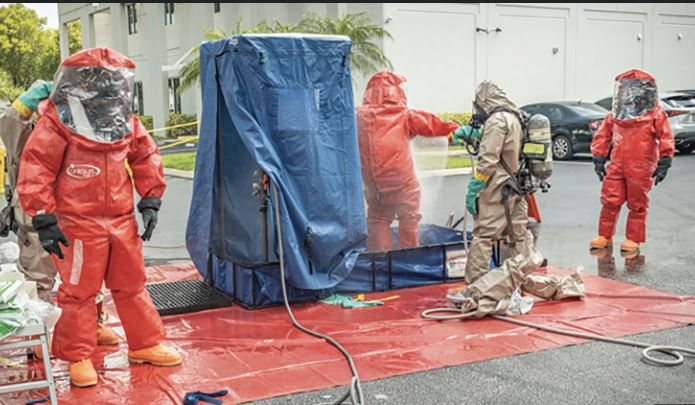Hydrogen fluoride (HF) is a colorless, corrosive gas with a sharp odor. In its aqueous form, it is known as hydrofluoric acid. HF is widely used in industrial applications such as metal cleaning, glass etching, and the production of fluorine-containing compounds. Despite its utility, hydrogen fluoride poses severe health and safety risks, necessitating stringent handling and safety measures to prevent accidents and health hazards.

The Perils of Hydrogen Fluoride in Industrial Settings
Health Risks of Hydrogen Fluoride Exposure
Exposure to hydrogen fluoride can cause serious health issues, both acute and chronic. HF is a potent corrosive substance that can cause severe burns upon contact with skin or eyes. Inhalation of HF vapors can damage the respiratory tract, leading to symptoms such as coughing, difficulty breathing, and chest pain. Long-term exposure or high concentrations can lead to more severe respiratory conditions, including pulmonary edema. Ingestion of HF can cause severe damage to internal organs, including the gastrointestinal tract and kidneys. Due to its ability to penetrate tissues and bind calcium, HF exposure can lead to systemic toxicity and potentially life-threatening conditions.
Occupational Risks and Industrial Applications
In industrial settings, workers handling HF are at significant risk due to the chemical’s corrosive nature and potential for accidental release. Industries that use HF include the petroleum refining sector, where it is used as a catalyst in alkylation processes, and the electronics industry, where it is used in the production of semiconductors. The risk of HF exposure is heightened in these settings due to the large quantities of the chemical used and the potential for spills or leaks. Proper safety protocols and equipment are essential to mitigate these risks and ensure worker safety.
Safety Measures and Handling Protocols
To minimize the risks associated with hydrogen fluoride, it is crucial to implement rigorous safety measures. Workers should use personal protective equipment (PPE) such as acid-resistant gloves, goggles, and face shields to protect against HF contact. Facilities should have proper ventilation systems to reduce airborne concentrations of HF. Spill containment measures, including neutralizing agents like calcium carbonate or calcium hydroxide, should be in place to manage accidental releases. Regular training and emergency response drills can prepare workers to handle HF spills and exposures effectively.
Emergency Response and First Aid
In the event of HF exposure, immediate first aid and emergency response are critical. For skin contact, affected areas should be rinsed with copious amounts of water, and calcium gluconate gel should be applied if available to mitigate the corrosive effects. Eye contact requires immediate irrigation with water or saline for at least 15 minutes, and medical attention should be sought promptly. Inhalation of HF vapors necessitates moving the affected individual to fresh air and seeking medical evaluation. Prompt and appropriate response can significantly reduce the severity of injuries and prevent long-term health effects.
Regulatory Standards and Compliance
Regulatory agencies, including the Occupational Safety and Health Administration (OSHA) and the Environmental Protection Agency (EPA), set standards for the safe handling and use of hydrogen fluoride. These regulations mandate proper labeling, storage, and training requirements to ensure worker safety and environmental protection. Compliance with these standards is essential for minimizing the risks associated with HF and maintaining a safe working environment.
Preventive Measures and Future Considerations
Preventive measures such as regular maintenance of equipment, routine safety inspections, and adherence to best practices can reduce the risk of HF incidents. Continuous research into safer alternatives and improvements in handling technology can further mitigate the hazards associated with hydrogen fluoride. Industry stakeholders must remain vigilant and proactive in implementing safety measures and staying updated on advancements in HF management.
Conclusion
Hydrogen fluoride presents significant health and safety risks in industrial settings due to its corrosive properties and potential for severe injury. Understanding the perils of HF, implementing stringent safety protocols, and adhering to regulatory standards are essential for protecting workers and the environment. Through effective handling practices and emergency preparedness, the risks associated with hydrogen fluoride can be managed to ensure a safer industrial workplace.




